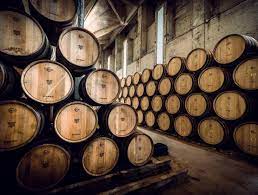Last week on this blog two different types of dry Sherry were discussed. Produced only in a limited geographical area of southwest Spain not far from Gibraltar, Sherry is different from other wine because of its “solera” system. Think of the solera as a vertical system where wine can be transferred via gravity flow.
Once the base wine goes through the initial aging with the flor of yeasts, it is then transferred to a holding area we’ll call the “nursery.” (The flor is not transferred but remains behind.) The nursery then babysits the wine until it’s ready for transfer to the the very top layer of the usually four tier Solera system.
To understand the Solera system, we’re now going to move from its top fourth level to the very bottom tier. Solera in Spanish means "on the ground." The very bottom level of the Solera system is a mixture of the wines that have been passed down through the varying levels bit by bit: from the fourth level to the third, then to the second layer, and finally to the bottom final level. The bottom ground level of the Solera is from where the finished sherry comes. It is important, however, to note that the bottom level casks are not emptied. Only a small amount of the cask is removed from the "ground floor." After this removal, the bottom layer is then topped off with wine from the levels above.
What is removed from the lowest level of the Solera system for bottling, is then replaced from the above level three. This third tier is then replaced with wine from the second tier. Likewise, Sherry from the first level of the Solera is allowed to flow into level two. Finally, a small amount of Sherry that has been patiently waiting in the nursery is permitted to flow into tier one of the Solera.
The bottle of Sherry that is ready for the consumer, hence, is a combination of all tiers of the Solera system, having been passed down slowly ounce by ounce from the nursery through all the levels. In summary, the solera system is a unique form of aging, as well as a form of blending. This system is unique and is only used to create Sherry.





No comments:
Post a Comment